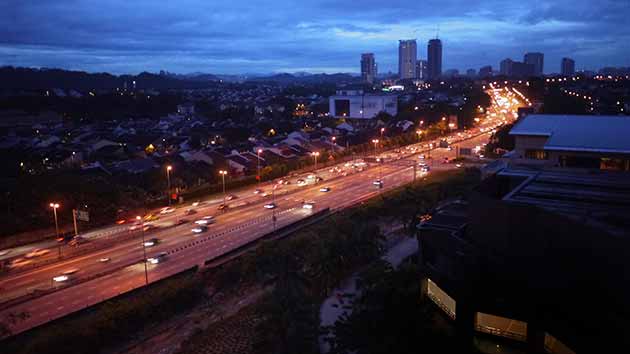It's Not a Panacea, but in Many Cases It Could Save Your Shoot

Whether you’re shooting abroad with a 60 Hz camera in a 50 Hz country, capturing time-lapse with a DSLR, or shooting fast or slow motion, chances are you’ve confronted the flicker menace. Of course, shooters have always faced the risk of flicker from out-of-sync TV sets, computer monitors, and fluorescent lighting in shops and large public places. Today the flicker peril seems even greater, owing to the tiny underpowered viewfinders in most cameras that make it difficult to spot, the increased use of LEDs and other discharge lighting, and the increased availability of cameras capable of shooting at off frame rates.
In some scenes, flicker may be seen as a faint background pulsating effect or as a more dramatic fluctuation in exposure. In most cases, the flicker may be reduced or eliminated through use of the synchroscan shutter found in newer video and still cameras like the Panasonic GH4. The fine shutter adjustment should always be your first course of action. Shooting 24p in 50 Hz countries? Set the camera shutter (in degrees) to 172.8º. Shooting 30p in 50 Hz countries? Set the camera shutter to 108º, 216º, or 324º. The use of the camera’s synchroscan shutter is imperative if one is to avoid serious flicker stemming from the field frequency mismatch when shooting abroad.
Still, despite the best-laid plans of mice and videographers, the specter of objectionable flicker will raise its ugly head, and this is where Digital Anarchy’s Flicker Free plug-in can save your backside. Compatible with Final Cut Pro 7/X, Avid Media Composer, Adobe Premiere Pro, and Adobe After Effects, the plug-in can be especially effective for eliminating flicker in time-lapse scenes or scenes captured under HMIs, fluorescents, and LEDs.
Foregoing pre-analysis, Flicker Free looks at pixel fluctuations on the fly over a maximum range of 21 frames, which can be memory intensive.
The Flicker Free software requires almost no learning curve. The presets for time lapse, slow motion, and archival film restoration, are convenient and easy to apply. This simple approach is possible because the flicker cadence is usually quite regular pattern and therefore predictable. In case of need the persnickety user may still further tweak the underlying parameters if desired.
The flicker from neon sources may produce a dramatic change in exposure that cannot be satisfactorily corrected using FF. This is because the increased gain required to compensate for the underexposed frames may produce objectionable noise. Flicker Free works best for scenes exhibiting a maximum 10-20% brightness fluctuation from frame to frame.
Flicker Free’s Threshold setting specifies how much change in brightness is tolerated from frame to frame. While significant changes in brightness within a scene are usually deliberate, this is not the case, for example, in an out-of-sync 60 Hz camera operating in a 50 Hz environment. In such cases, Flicker Free is not likely to offer much help.
Flicker Free either works very well or not at all. But when Flicker Free does work, you’ll be glad and very grateful.
Did you enjoy this article? Sign up to receive the StudioDaily Fix eletter containing the latest stories, including news, videos, interviews, reviews and more.
More reviews












LED lighting is flicker free unless PWM is used for dimming